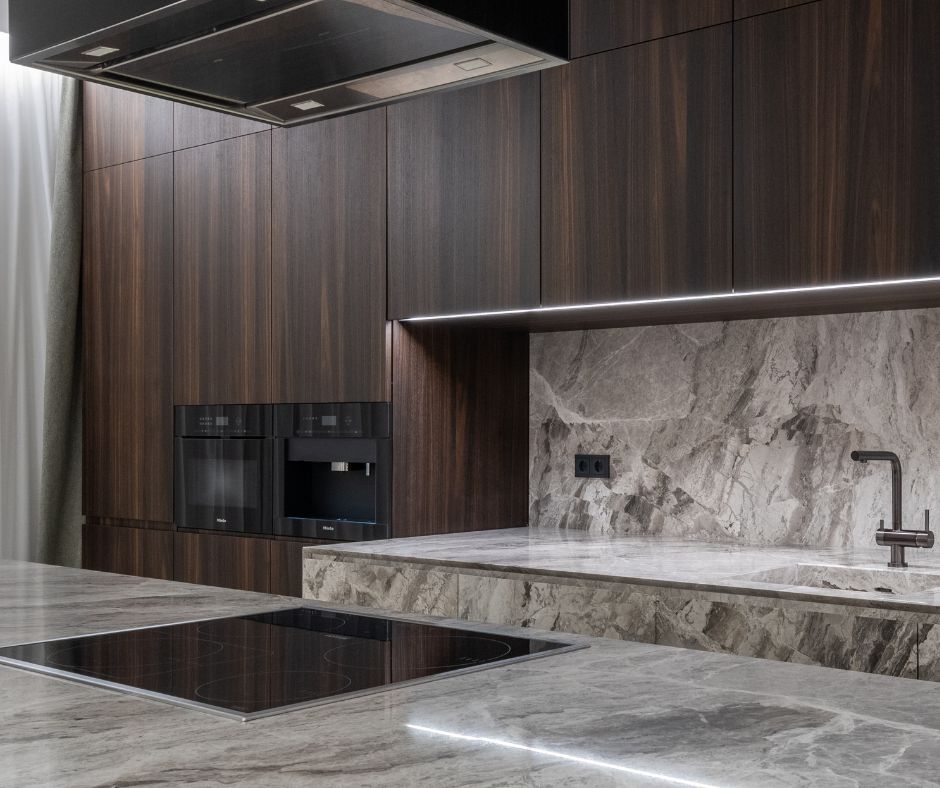Innovative kitchens are the breeding ground for new culinary traditions. Although induction cooking technology might appear to be a contemporary marvel, its roots can be traced back to the early 20th century. The first demonstrations in the 1930s fascinated onlookers with the astonishing capability to boil water using magnetic energy without any visible heat source. Nevertheless, it is only in the last few decades, thanks to significant advancements in technology, efficiency, and design, that induction cooktops have firmly established themselves within modern kitchens.
Today, a growing number of home chefs and culinary aficionados are embracing induction cooking due to its striking blend of sleek aesthetics, exceptional precision, and unparalleled energy efficiency. This innovative cooking method not only speeds up meal preparation but is also transforming the art of home cooking, seamlessly merging the science of heat management with culinary creativity in every dish prepared on its elegant, polished surface. The right induction cooktop can rival the cooking speed of a microwave, enabling the creation of delicious family meals!
Unlocking the Full Potential of Flavour and Nutrition with Precision Cooking
Unlike traditional gas or electric ranges, induction cooktops directly heat cookware through electromagnetic energy. This groundbreaking approach eliminates wasted heat, prevents burnt edges, and offers superior control over both low and high temperatures. With the ability to manage heat with such precision, your ingredients can retain more of their natural moisture, flavour, and nutritional integrity. Whether you are flash-searing proteins, gently simmering sauces, or quickly blanching vegetables, induction cooking facilitates effortless achievement of perfect results, steering clear of overcooked meals and nutrient loss.
Stylish Induction Cooktops: Maximising Space and Minimising Stress in the Kitchen
In kitchens where every square centimetre is precious, induction cooktops excel not only in performance but also in visual appeal. Their flat, smooth surfaces seamlessly integrate into your countertop, offering a minimalist appearance that creates additional space for food preparation, plating, or even enjoying casual meals with family and friends.
In contrast to traditional gas hobs, which come with cumbersome grates and protruding burners, induction cooktops sit flush with the countertop. While ceramic stovetops may provide a sleeker aesthetic, they tend to remain dangerously hot long after the cooking process is complete, posing a safety hazard in the kitchen.
Conversely, induction surfaces cool down rapidly once the cookware is removed. The heat is generated through the magnetic interaction between the cooktop and the cookware rather than by the cooktop itself, meaning the glass surface retains significantly less heat. This feature not only makes cleaning safer and easier but also creates a more secure cooking environment, particularly beneficial for households with children or pets who may be curious about kitchen activities.
The result? A cooler kitchen with cleaner lines and enhanced flexibility—perfect for modern cooks who appreciate both form and function in their culinary spaces.

Essential Guide to Choosing the Right Cookware for Induction Cooking
Transitioning to induction cooking may bring with it a bittersweet realisation—you may need to part with some beloved old pans. Since induction technology relies on magnetic energy to generate heat, not all pots and pans will be suitable for this advanced cooking method.
For cookware to function effectively on an induction cooktop, it must be constructed from ferrous (magnetic) metals, such as cast iron, carbon steel, or magnetic-grade stainless steel. A straightforward fridge magnet test can determine compatibility: place a magnet on the bottom of the pan. If it adheres firmly, you're set to start cooking!
When selecting new cookware, choose pans with a heavy, flat base. This design ensures optimal contact with the cooktop, facilitating even heat distribution, which is critical for achieving perfect browning, tender roasts, and crispy edges. Furthermore, high-quality induction cookware is engineered to resist warping over time, ensuring consistent cooking performance for every meal.
While it might be challenging to let go of old favourites, consider it an upgrade. In return, you will gain enhanced control, quicker cooking times, and dishes that showcase even richer flavours and textures.
Induction Cookware Quick Checklist: Essential Items for Successful Cooking
 Conduct a fridge magnet test—strong adhesion indicates compatibility for induction cooking
Conduct a fridge magnet test—strong adhesion indicates compatibility for induction cooking Prefer flat-bottom pans for optimal contact and heat distribution
Prefer flat-bottom pans for optimal contact and heat distribution Select cast iron, carbon steel, or magnetic stainless steel cookware
Select cast iron, carbon steel, or magnetic stainless steel cookware Avoid cookware made solely of copper, aluminium, or glass unless they are explicitly marked for induction
Avoid cookware made solely of copper, aluminium, or glass unless they are explicitly marked for induction Look for the induction symbol (which resembles a horizontal coil or a series of loops) stamped on the base or packaging of cookware
Look for the induction symbol (which resembles a horizontal coil or a series of loops) stamped on the base or packaging of cookware
Pro Tip: The induction symbol typically looks like a zigzag or spring coil graphic. Spotting it guarantees that your cookware is compatible with induction cooktops.
Key Installation Factors for Your Induction Cooktop
Before you embark on your culinary journey with your new cooktop, there are several essential installation factors that must be prioritised:
-
Professional Installation Is Crucial: Induction units often necessitate dedicated electrical circuits and specific clearance requirements. It is imperative to engage professionals who are knowledgeable about these requirements.
-
Engage a Qualified Electrician: Wiring a high-powered induction cooktop is not a DIY project.
Learn why hiring a qualified electrician is essential. -
Check Your Power Setup: Some induction models demand significant power. Before making a purchase, verify that your wiring meets the cooktop’s specifications.
Proper installation not only guarantees optimal performance but also ensures safety and durability.
Key Insights About the Benefits of Induction Cooking
Induction cooking offers more than mere speed or safety—it embodies an inherently intelligent cooking solution. With the appropriate cookware and a professionally installed system, you can consistently achieve better tasting meals, richer textures, and healthier options, meal after meal. In modern kitchens, precision cooking is not simply desired; it has become the new standard for culinary excellence.
Frequently Asked Questions Regarding Induction Cooktops
1. What Makes Induction Cooktops Superior to Gas or Electric Options?
Induction cooktops deliver immediate heat control, enhanced energy efficiency, and improved safety features. Since they heat the cookware directly, meals cook more quickly with less energy waste, while the surfaces remain cooler, significantly reducing the risk of burns.
2. Can I Use My Existing Pots and Pans on an Induction Cooktop?
Only if they are magnetic. Cookware made from cast iron or magnetic stainless steel is ideal. You can easily check for compatibility by placing a magnet on the base—if it sticks firmly, it’s suitable for induction use.
3. Does Induction Cooking Affect the Flavour of Food?
Yes, and in a positive manner. Because induction cooking allows for precise temperature control, you can sear, sauté, or simmer without overheating, thus preserving the natural flavours, textures, and nutrients far more effectively than with inconsistent gas or electric heat.
4. Is Special Wiring Necessary for an Induction Cooktop?
Most induction cooktops require a dedicated electrical circuit along with specific voltage and amperage configurations. It is essential to have a professional electrician assess and install your wiring to ensure compliance with safety regulations and guarantee optimal performance.
The post The Secret Ingredient in Modern Kitchens: Induction Cooktops Are Changing the Game appeared first on https://cookinggods.com
The Article Induction Cooktops: The Game-Changer in Modern Kitchens Was Found On https://limitsofstrategy.com

